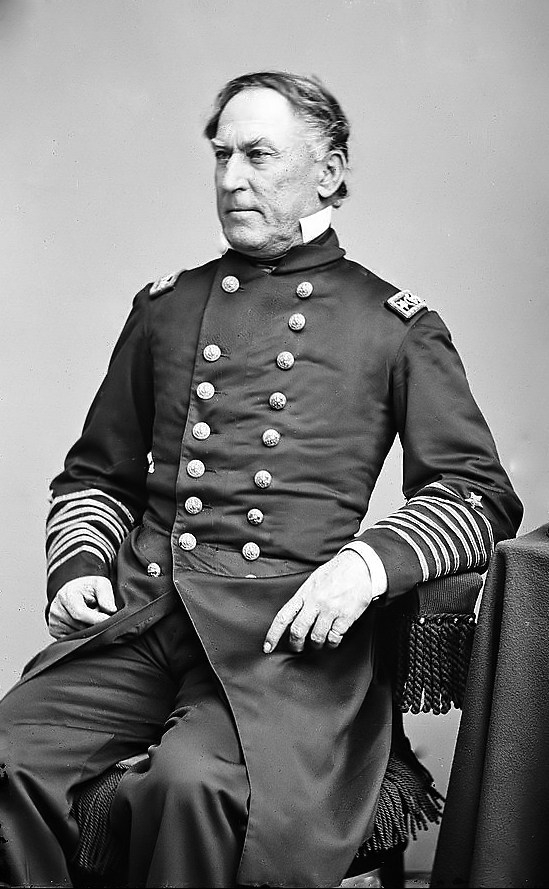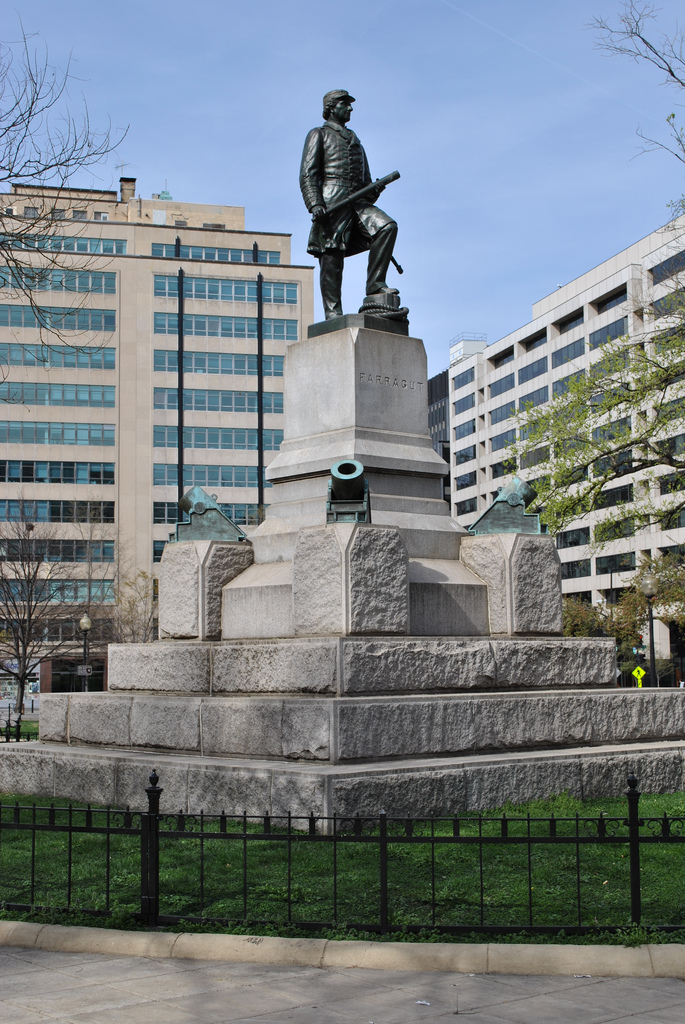“We Come to Hail This Hero”: Dedicating the Admiral Farragut Statue

On the evening of April 25, 1881, President James A. Garfield sat down to write in his diary as he did most nights. Garfield had only been president for about seven weeks, and much of his time had thus far been dedicated to obligatory meetings with thousands of office-seekers—and many of his diary entries reflected his frustration with this practice. But on this day, Garfield had finally had an official duty to perform that he relished. “Departments closed in honor of the Farragut ceremonies,” he wrote.
On this day 137 years ago, the unveiling of the new statue to Admiral David G. Farragut, even today one of the most famous sailors in U.S. history, took place in Washington, D.C. The statue still stands about two blocks from the White House in a spot now known as Farragut Square. As president, it was Garfield’s duty to accept the statue on behalf of the American people. He spoke briefly, telling his diary, “After the unveiling, I spoke about two minutes—fairly well…” His speech that day shows that Garfield clearly found the life and career of Farragut as impressive as it remains to us today, nearly fourteen decades later.
David Glasgow Farragut was born in Tennessee on July 5, 1801. His mother died young, and he was fostered by naval officer David Porter (father of Farragut’s contemporary David Dixon Porter). Though just nine years old, Farragut served in the Navy under his adoptive father starting in 1810, beginning a career on the water that would last until his death nearly sixty years later. He received his first command in 1824, fought pirates in the Caribbean, served under Commodore Matthew Perry in the Mexican-American War, and oversaw construction of the Mare Island Naval Shipyard in California—the first U.S. Navy base on the Pacific Ocean.
It was the Civil War, though, that brought Farragut to the American public’s attention. Though born in Tennessee and residing in Virginia before the war, Farragut never considered siding with the Confederacy. (Ironically, his son, born in 1844, was named Loyall, the maiden name of Farragut’s wife Virginia Dorcas Loyall Farragut. The younger Farragut graduated from West Point in 1868 and served in the Army until 1872.) He commanded Union ships in the capture of New Orleans in April 1862, receiving a promotion to rear admiral after taking the city. He patrolled up the Mississippi River and fought in the siege of Port Hudson during the Vicksburg campaign. In August 1864, Farragut led the attack on Mobile Bay in Alabama, the Confederacy’s last major port on the Gulf of Mexico. It was during this fight that he famously exclaimed “Damn the torpedoes! Full speed ahead!” (Farragut’s exact words have been quoted a few different ways, but this was the gist of his order.)
Farragut stayed in the Navy after the Civil War, becoming the nation’s first full admiral on July 25, 1866—the same day Ulysses S. Grant was elevated to the newly-created rank of General of the Army of the United States. He was still on active duty when he died at age 69 on August 14, 1870. He is interred in Woodlawn Cemetery in The Bronx, New York City.
David G. Farragut’s naval career spanned an incredible sixty years and took him into combat in three major wars and countless smaller conflicts. The statue dedicated to his memory on this day in 1881 was sculpted by Vinnie Ream Hoxie, one of the nation’s foremost sculptors of the era and notable for being both the youngest artist and first female to receive a commission as an artist from the U.S. government. She was just 18 years old in 1866 when Congress chose her to sculpt a full-size marble statue of Abraham Lincoln for the U.S. Capitol Rotunda.
The statue Hoxie sculpted of Farragut is ten feet tall. She used bronze from the propeller of the USS Hartford, Farragut’s flagship during the Civil War. The propeller was melted down specifically for her statue, which depicts Farragut standing on a ship’s deck with his right foot on a capstan and his telescope in his hands as if he is watching a naval engagement in the distance. Four mortars, also made of bronze from the Hartford’s propeller, guard the admiral.

About 3,000 people attended the ceremony at which President Garfield accepted the statue. Among them—fittingly for Farragut, a southerner who hated secession and stayed loyal to the Union—were the Capital City Guards, a unit of African American Civil War veterans from Washington, D.C. The Washington Post noted the day after the ceremony that the statue was wrapped in an American flag and encircled with wreaths before the ceremony began. “The background, look which way one might, was a vista of handsomely decorated residences. Windows, from parlor to attic, were curtained with the National colors, and contained living pictures of beauty in face and costume . . . (and) silken banners flaunted over many roofs, where chairs, and sofas even, had been arranged as furniture for points of observation.”
President Garfield, himself a Union veteran, told the crowd: “As the years pass on, these squares and public places will be rendered more and more populous, more and more eloquently by the presence of the heroes of other days… Today we come to hail this hero, who comes from the sea, down from the shrouds of his flagship, wreathed with the smoke and glory of victory . . . to take his place as our honored compatriot, and a perpetual guardian of his country’s glory.”
Garfield’s prediction that public spaces would be filled with monuments to Civil War heroes was correct, but few honored with such statues served as long or as nobly as Admiral David G. Farragut.
Lovely tribute to this hero. Thanks.
Great post. Thanks. Just a salty quibble: It looks like his left (not right) foot is resting on a bollard, i.e., a short vertical post for securing lines. A capstan–a rotating, vertical winch for hauling lines–would be a lot bigger.